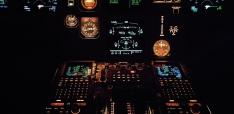Expanding the Deck or Just Reshuffling? What the Crisis Preparedness and Response Toolkit could mean for International Development Association Countries

Cristina Stefan, Lead Risk Finance Adviser, and Anna DeGrauw, Policy and Strategic Partnerships Officer, take a look at what the Crisis Toolkit could mean to strengthen pre-arranged financing targets, crisis preparedness, and partnerships in the World Bank’s lending to International Development Association (IDA) countries.
As international crisis financing confronts the challenges of the 21st century, the World Bank is under pressure to reassess its approaches. It recently expanded its Crisis Preparedness and Response Toolkit to support countries dealing with disasters. Only two of five instruments in the Toolkit are new: Investment Policy Finance with Deferred Drawdown Option (IPF DDO) and Climate Resilient Debt Clauses (CRDCs). The remaining three are instruments that existed either under a different design, like the Rapid Response Option (RRO) or are simply being scaled up, like the Catastrophe DDO and Cat Bonds. Three recommendations can help ensure that these tools make a difference for low-income countries and those in fragile and conflict situations:
-
Set pre-arranged financing targets across the Toolkit with a particular focus on IDA countries[1]
Only 8.3% of all IDA crisis financing was pre-arranged from 2017-2021. The Crisis Toolkit could help address the gap because it focuses on measures that can be prepared before a crisis occurs. For the Toolkit to deliver on its purpose, it must set measurable targets for the adoption of the tools and for increasing pre-arranged financing. This means introducing targets on the volume of pre-arranged finance for all instruments. There should be special attention to the accessibility and affordability of these instruments for low-income countries. The Bank needs to develop a level playing field in terms of concessions.
-
Base new response finance on systems’ preparedness
Even if available funding is timely, getting it to the right people matters. Good disaster risk financing rests on predictable, pre-arranged finance flowing to people in vulnerable situations through fit-for-purpose systems, following pre-agreed plans. Where the money goes is just as vital as the money on the table.
The Bank’s tools and processes make it well-placed to identify and prioritise systems strengthening investments through frameworks such as Country Partnerships, the Crisis Preparedness Financing Tracking Indicator, and the Crisis Preparedness Gap Analysis (CPGA). The CPGA, a new name for an old initiative, intends to measure progress in crisis preparedness through a dedicated dashboard. To prove its purpose, the dashboard must become an actionable tool that measures how the instruments in the Toolkit connect to strengthening systems that get the ‘money out’ to the right people.
-
Link the Toolkit with other partners’ capabilities
IDA20 encourages partnerships, but the Crisis Toolkit does not mention how it works with other development actors, like regional development insurers[2]. As proposed in IDA20, the Bank should use the funding for the Crisis Toolkit’s DRT products to channel premium support for insurance products offered by regional development insurers.
Playing the cards right: Unleashing the full potential of the Crisis Toolkit for IDA countries
The Crisis Toolkit is a new deck, with new cards, such as IPF DDOs and CRDCs, and a reshuffling of old cards –RROs, Cat DDOs, and DRTs. What matters is how they are played when a shock happens, acknowledging that some cards are still missing for low-income or fragile countries. The deck should not be stacked in favour of specific instruments or countries if the Bank intends to be a better, not just a bigger Bank.
A longer version of the article is published here by the Centre for Disaster Protection.
Photo by Kristóf Sass-Kovan
Notes
[1] The Bank determines eligibility for International Development Association (IDA) borrowing based on poverty levels and lack of creditworthiness for commercial or International Bank for Reconstruction and Development (IBRD) borrowing.
[2] Regional risk pools include the African Risk Capacity (ARC), Caribbean Catastrophe Risk Insurance Facility (CCRIF), Pacific Catastrophe Risk Insurance Company (PCRIC), and Southeast Asia Disaster Risk Insurance Facility (SEADRIF).


